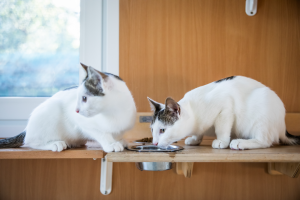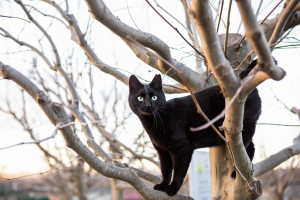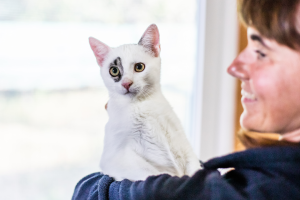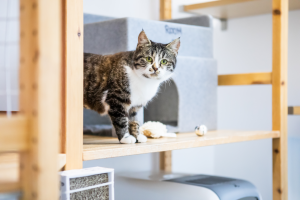How many times a day should I feed my cat?
When should I feed my cat? How many times a day? Is dry or wet food better? We take an in-depth look at the ethologically correct ways to feed domestic cats.
Cats don’t adhere to a specific feeding schedule; instead, they eat at various times throughout the day and night, with a slightly increased frequency between dusk and dawn
The topic may seem unimportant at first glance, yet we often make several mistakes when it comes to feeding our cats, albeit quite unintentionally. This tendency arises partly from the common inclination to equate cats with dogs and partly from our habit of feeding cats according to human schedules – specifically, at set times in the morning and evening – for the sake of convenience or familiarity.
While this approach may suit humans well from an organizational point of view, it imposes limitations when compared to cats’ natural physiological and psychological characteristics. This type of feeding regimen can sometimes be a source of stress and frustration for some cats, particularly those strongly driven by food, and can generate undesirable behavior. It’s crucial to bear in mind that autonomy and freedom of choice are fundamental values for cats’ well-being.

Cats living in the wild are solitary predators and strict carnivores
What are the feeding habits of a wild cat in terms of timing and quantity?
Cats living in the wild are solitary predators and strict carnivores. They are estimated to engage in approximately 150 hunting attempts every day, of which only 10% are successful. For this reason, their digestive system has adapted to consuming small, frequent meals throughout the day.
Read also: Cat motivation
Cats don’t adhere to a specific feeding schedule; instead, they eat at various times throughout the day and night, with a slightly increased frequency between dusk and dawn when they are at their most active mentally and physically. This explains why your cat may often wake you up at dawn; he or she is behaving exactly as they would in the wild.

The golden rule is to leave food out and available for them at all times: this helps cats find their routine without forcing them to adapt to ours
What’s the best approach when dealing with your pet?
Domestic cats are very similar to their wild ancestors. Therefore, feeding them at fixed times, as is the case with dogs, is not the best solution for cats living at home with us.
The golden rule is to leave food out and available for them at all times: this helps cats find their routine without forcing them to adapt to ours. Some cats also appreciate having two bowls in different places. We will explore how to manage and choose the bowls next time.
Read also: Why do cats “knead”?
It is therefore recommended to provide your pet with food that is available for consumption at all times. This allows your cat to eat freely, according to his or her own schedule and appetite, while ensuring that the food provided is of high quality and suitable for domestic cats. Some people fear that this practice may cause the animal to gain excessive weight. Their concern is unfounded: this feeding method is never the main cause of obesity in cats. On the contrary, rationing food is often one of the triggering factors, as it can induce the cat to consume larger quantities more quickly.

A healthy cat should therefore always have access to good quality wet and dry food suitable for its age
Does feeding a cat often make it gain weight?
If your cat shows a tendency to overeat and is overweight, it is important to consult a veterinarian specialized in nutrition, as overweight problems depend more on the quality of the food and the cat’s physical activity than on the frequency of the meals. It is important to avoid reducing the number of meals independently, as this could aggravate the situation. If it becomes necessary to adopt a more controlled diet (a decision that should be made by the veterinary nutritionist), it is essential to maintain at least 6-7 meals a day, preferably concentrated in the late afternoon and evening.
A healthy cat should therefore always have access to good quality wet and dry food suitable for its age. He or she will decide when to eat. Remember that it is important not to feed the cat exclusively with dry food; cats also need wet food. And don’t forget to provide your cat with a tray of fresh grass: this gesture will be greatly appreciated.
